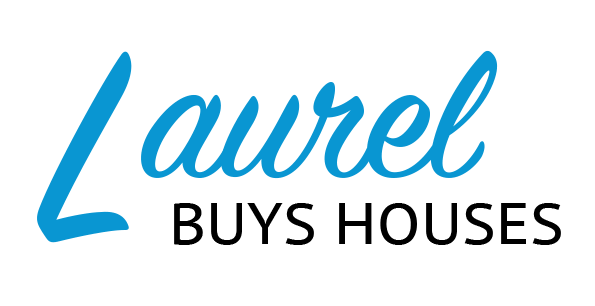If you’re thinking of becoming a homeowner, you’re likely planning ways to save for a down payment. For many renters, this idea of saving money while managing monthly rent payments can be intimidating, even challenging. However, with the right strategies and a disciplined approach, you can turn this into an attainable goal. In this article, we will provide you with practical tips to help you save for a down payment and a strategy to ensure your transition from renting to owning is smooth and manageable.
Understanding Your Financial Situation
Before you can start saving for a down payment, it’s essential to understand your current financial situation. Assess your income and expenses, calculate your monthly savings potential, and then, once you know the situation, set a realistic savings goal. By having a clear picture of your finances, you’ll be better equipped to make informed decisions and create an effective savings plan.
- Assess Your Current Financial Health
Let’s explore the first step. Start by reviewing your income and expenses. Create a detailed list of all your sources of income, including your salary, side income streams, and any other earnings. Next, track your monthly expenses. Categorize them into essentials (rent, utilities, groceries) and non-essentials (entertainment, dining out, subscriptions). This will give you a clear picture of your spending habits and help you identify areas where you can cut back.
After doing this, you can calculate your monthly savings potential. Subtract your total monthly expenses from your total monthly income. The difference is the amount you can potentially save each month. This figure will serve as a starting point for setting your savings goal.
- Set a Realistic Savings Goal
The story doesn’t end here, though. Setting a realistic savings goal is crucial for staying motivated and on track. Determine how much you need for a down payment by considering the type of home you want to buy and its price range. Typically, a down payment is around 20% of the home’s purchase price, but this can vary depending on the loan type and requirements.
Use online calculators to estimate your down payment amount. These tools can help you understand how much you need to save each month to reach your goal. Remember to factor in additional costs such as closing fees, moving expenses, and an emergency fund.
Creating a Budget and Sticking to It
A well-structured budget is crucial for a successful saving strategy. You need to learn how to track your spending, identify areas where you can cut back, and prioritize your savings. By automating transfers to a dedicated savings account and choosing a high-yield option, you’ll get your savings to grow consistently and efficiently.
- Track Your Spending
You now know what you’re making and whether that money goes towards essentials or wants, but you need to know more details. Start by tracking your spending using apps or spreadsheets. Monitor every expense, no matter how small, to get an all-encompassing view of your financial habits. This will help you identify patterns and pinpoint areas where you can reduce spending.
- Prioritize Savings
To make saving a priority, pay yourself first. Set up automatic transfers from your checking account to your dedicated savings account each month. This ensures that you consistently contribute to your down payment fund. Choose a high-yield savings account to maximize your interest earnings.
Open a dedicated savings account specifically for your down payment. This will help you keep your savings separate from your regular expenses and reduce the temptation to dip into the fund for non-essential purchases.
Reducing Expenses
Cutting unnecessary costs is a practical way to increase your savings. Let’s check out some tips on how to reduce your monthly expenses, from canceling unused subscriptions to cooking at home. You can also implement broader strategies for saving on rent, such as negotiating your lease or considering a move to a more affordable apartment, which can free up additional funds for your down payment.
- Cut Unnecessary Costs
Start by canceling unused subscriptions and memberships, as these silent payments can easily eat up a big chunk of your income. Consider switching to a cheaper cell phone plan, cutting cable, or downgrading to a more affordable internet package.
Cooking at home instead of dining out can significantly reduce your monthly food expenses, even though it may sound basic. Plan your meals, make grocery lists, and buy in bulk to save money. Also, find free or low-cost entertainment options, such as local parks, community events, and streaming services.
- Save on Rent
Your rent is likely one of your biggest expenses, so finding ways to reduce it can free up important funds for your down payment. Negotiate your lease with your landlord, especially if you have a good payment history. They may be willing to offer a lower rent or additional amenities.
Consider moving to another rental apartment or location. While this may require some initial effort and cost, the long-term savings can be significant. Additionally, explore the possibility of having a roommate to share the rent and utility expenses.
Increasing Your Income
Adding more income streams to your monthly total can significantly accelerate your savings progress. Think about taking on side hustles, selling unused items, and asking for a raise at your current job.
- Side Hustles and Part-Time Jobs
One way to increase your income is to explore freelancing opportunities in your field, such as writing, graphic design, or consulting. The gig economy offers numerous options, from driving for rideshare services to delivering groceries or food.
Selling unused items online is another effective way to generate extra cash. Platforms like eBay, Craigslist, and Facebook Marketplace make it easy to sell clothing, electronics, furniture, and more. Decluttering your space not only helps you save but also prepares you for the eventual move.
- Ask for a Raise or Promotion
Don’t be afraid to ask for a raise or promotion at your current job. Prepare a case highlighting your achievements, contributions, and the value you bring to the company. Research industry standards for salary increases and be ready to negotiate.
Investing in professional development can also enhance your earning potential. Consider taking courses, earning certifications, or attending workshops to improve your skills and increase your marketability.
Using Financial Assistance Programs
There are numerous financial assistance programs designed to help first-time homebuyers. There are different types of programs available, including grants, low-interest loans, and tax incentives. Understanding which of these resources could work for you can greatly reduce the amount you need to save out of pocket.
- First-Time Homebuyer Programs
Many financial assistance programs are designed to help first-time homebuyers save for a down payment. Research local, state, and national programs that offer grants, low-interest loans, and tax incentives. These programs often have specific eligibility requirements, so make sure you meet the criteria before applying.
- Grants and Loans
Explore grants and loans specifically aimed at down payment assistance. Some programs provide funds that do not need to be repaid, while others offer advantageous loans if you meet certain conditions, such as living in the home for a specified number of years.
Smart Saving Strategies
Implementing smart saving strategies can make the process more manageable and keep you motivated. You can use windfalls such as bonuses and tax refunds to save with purpose. By staying focused on your goal and rewarding yourself for reaching milestones, you’ll maintain the motivation needed to achieve your dream of homeownership.
- Use Windfalls Wisely
Windfalls such as bonuses and tax refunds can provide a significant boost to your savings. Instead of spending these funds on non-essential items, allocate them directly to your down payment savings account. Do the same with any cash you receive as a gift. This approach can help you reach your goal faster.
- Save with Purpose
Saving with purpose involves maintaining motivation and focus on your goal. Visualize the home you want to buy. This mental image can keep you motivated during challenging times.
Reward yourself for reaching milestones along the way. Celebrate small victories, such as hitting a savings target or cutting an expense. These rewards don’t have to be expensive—consider a special treat, a day out, or a small purchase you’ve been wanting.
Conclusion
Saving for a down payment on a home may seem overwhelming, but with disciplined saving and strategic planning, it is well within your reach. By following these practical tips we’ve outlined here, you can turn your dream of homeownership into reality. Good luck!

